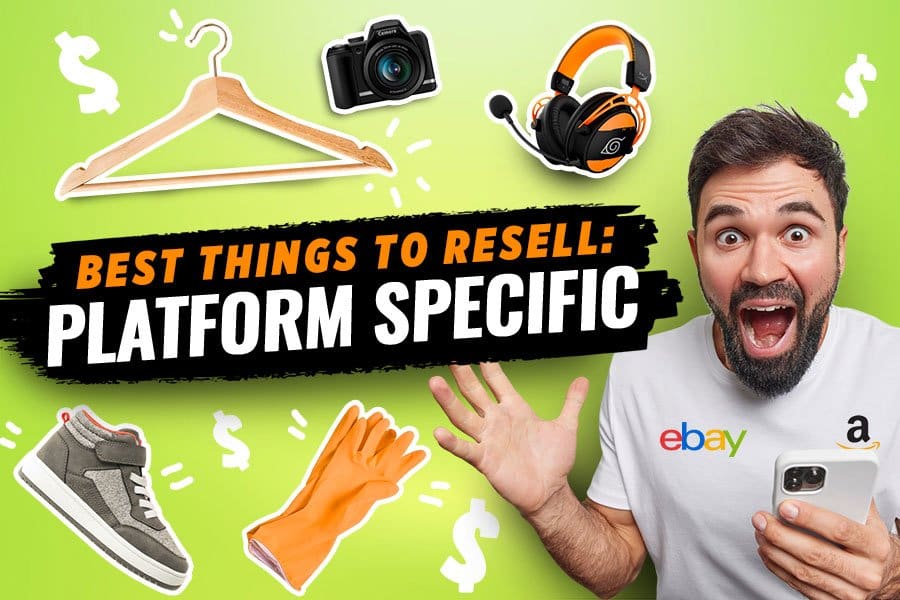You’ve come to the right place if you’re looking for wholesale items to resell, video game items to resell, or the best types of items to flip for profit.
Mike Wilson retired after 30 years of running a furniture store, but now Golden State Picker makes $30,000-$35,000 in revenue each month finding the best things to resell on eBay. He shared the keys to his success and how you can make a great living in reselling.
We’ll share tons of flipping ideas, software to help you identify cheap items to resell, and what works well on each platform. With this information, you’ll be ready to buy and sell items from every corner of the community.
What Can I Sell?
You can sell almost anything, but some items hold value better than others. It’s just a matter of what products you can find and afford for less than the going rate. We’ll cover many different items, but if you are trying to sell online, most purchases are under $115.
Check out our interview about reselling below:
What items can I get in trouble for selling without a license?
Many locations object to people selling large quantities of items without a business license, but some products require special licensing to sell stuff such as:
- Food
- Alcohol
- Tobacco products
- Marijuana
- Prescription medicine
- Illegal drugs (With or without business licensing, some items might land you in prison. For younger business owners, it’s not uncommon to be asked to help people launder money, which is also illegal).
What Can I Resell to Make a Lot of Money?
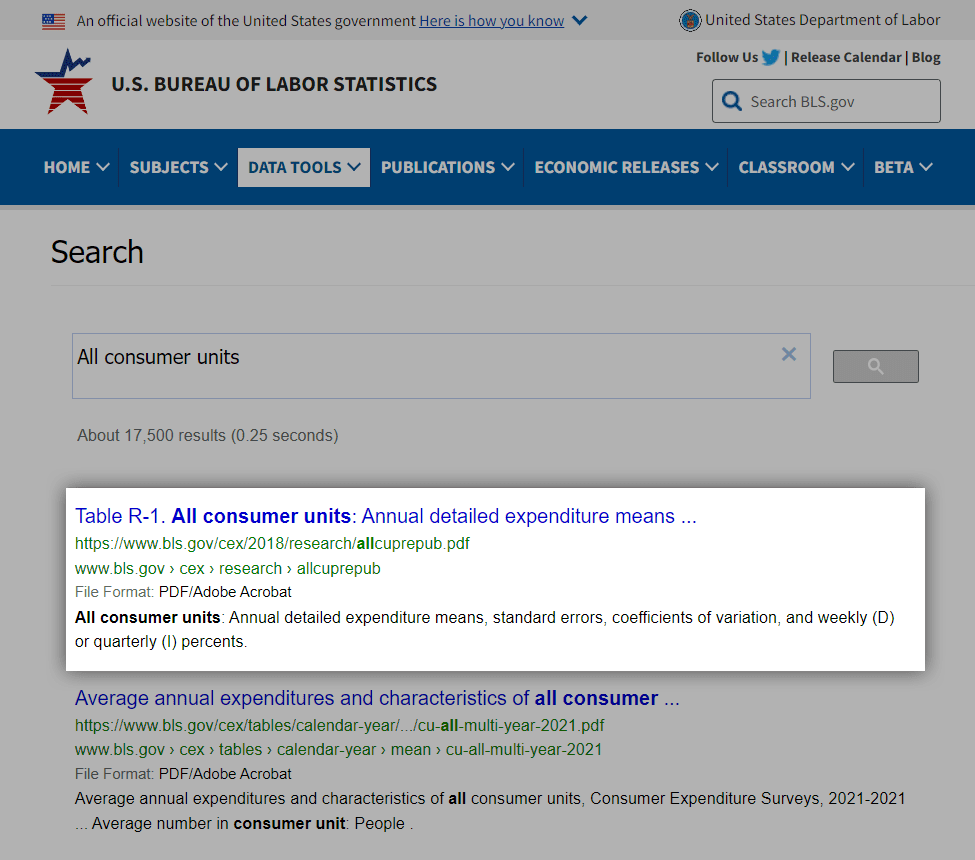
According to the Bureau of Labor Statistics, people frequently buy the following products, which means you should be able to sell them faster on a selling app or free online marketplace. You should make decent profits long term. The following shows averages of how families spend money each year:
- Clothes – $1,434.26 (Women spend about 67% more than men.)
- Miscellaneous household equipment – $1,117.53
- Audio and visual equipment – $1,049.26
- Cleaning supplies – $836.51
- Personal care products – $646.35
- Furniture – $534.17
- Shoes – $313.94
- Snacks – $204.54
- Home decor items – $165.79
- Toys, games, and bikes – $156.74
- Garden and lawn equipment – $111.18
- Water bottles – $71.63
Take a look at the list. It’s quite impressive.
Best Things to Resell Online
The best items to flip online will depend on what site you are using. Mike told us:
You’ll find out about Amazon, eBay, Facebook, Poshmark, and Etsy in the following sections.
What are the best things to resell on Amazon?

The best items to resell on Amazon include:
- Shoes
- Shirts
- Boxers
- Books
- Face cleaner
- Water bottles
- Printers
- Label makers
- Headsets
- QR code readers
- Dog food and other products for dogs
Buy in bulk and use Fulfillment by Amazon to qualify for Prime shipping for best results. Check out our interview with the owner of Shed Defender to find out how he makes $150K a month with Amazon FBA.
Next, we’ll answer “what are the best items to flip on eBay?”
What are the best things to resell on eBay.com?
If you’re looking for ebay flipping ideas, consider:
- Power tools
- Laptops
- Tablets
- Headphones
- Gaming systems
- Home security systems
- Furniture
- Towels
- Purses
- Cars
- Watches
- Clothing
Those are the best things to buy and resell on eBay.
Mike also suggested broken old-school record players:
You can sell almost anything, but check their prohibited items policy if you still need to determine whether they will allow you to sell an item on eBay. We created an eBay walkthrough that shows you how to set up a shop and list your items. Next, we’ll discuss the best items to flip on Facebook Marketplace.
What are the best items to flip on Facebook?
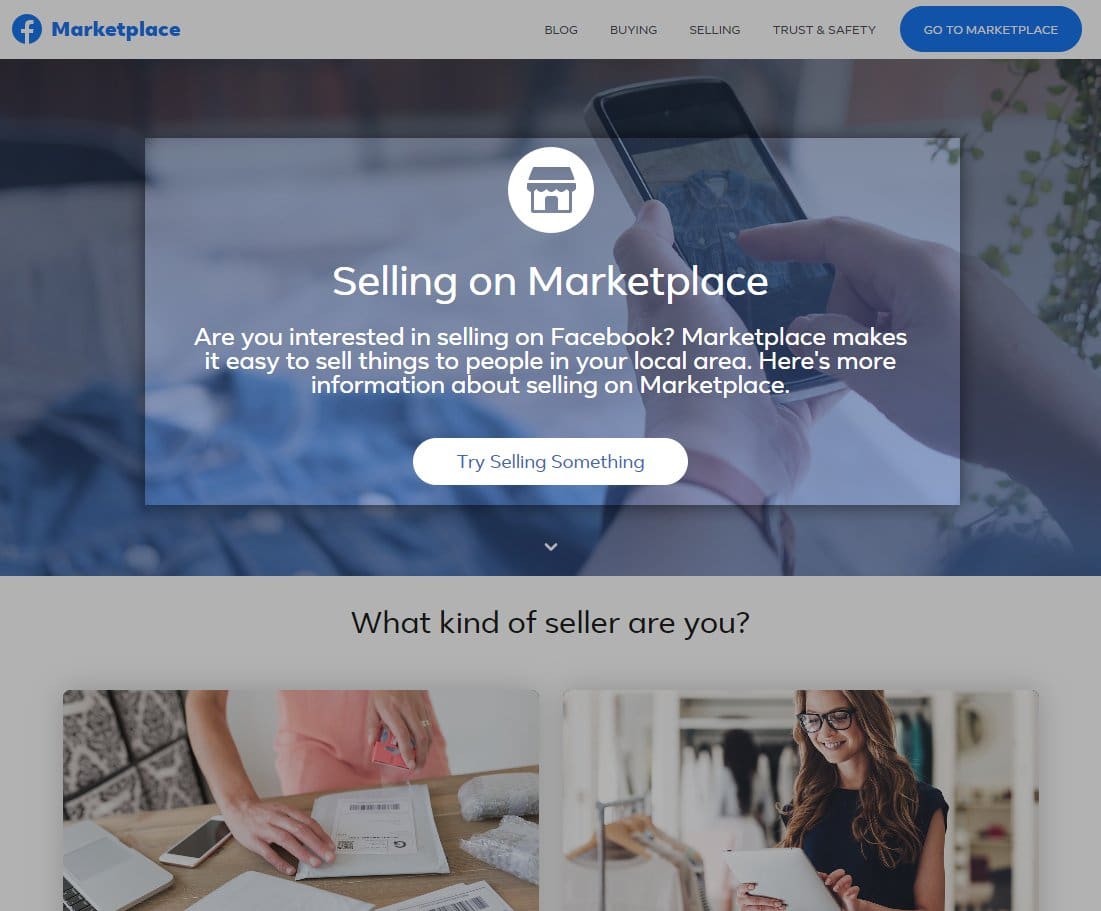
Facebook Marketplace is a great place to list items for local sales. The FB Marketplace helps people and businesses connect with buyers and sell their products. The Facebook Marketplace has the following categories:
- Apparel
- Auto parts
- Electronics
- Garden and outdoor
- Hobbies
- Home goods
- Home improvement supplies
- Home Sales
- Musical instruments
- Office supplies
- Sporting goods
- Toys and games
- Vehicles
They have a section for free items, too. Free items are probably the best items to resell because the profit potential can be astronomical. People give away furniture, TVs , food, monitors, and just about anything you can imagine. They expect you to pick it up, though. After you do, you can sell it elsewhere for market price. Learn more about Facebook Marketplace selling.
Check out this article for tools that get better results selling on Facebook.
What are the best items to auction flip?
Here are three types of auction flips that people normally search for:
- Buy at auctions and sell at other places.
- Buy at yard sales, thrift shops, and other places, then sell at auctions.
- A game called Hypixel. The rules state that you cannot sell items for real money so this is one for the true gamer.
Buy at auction, sell on marketplace
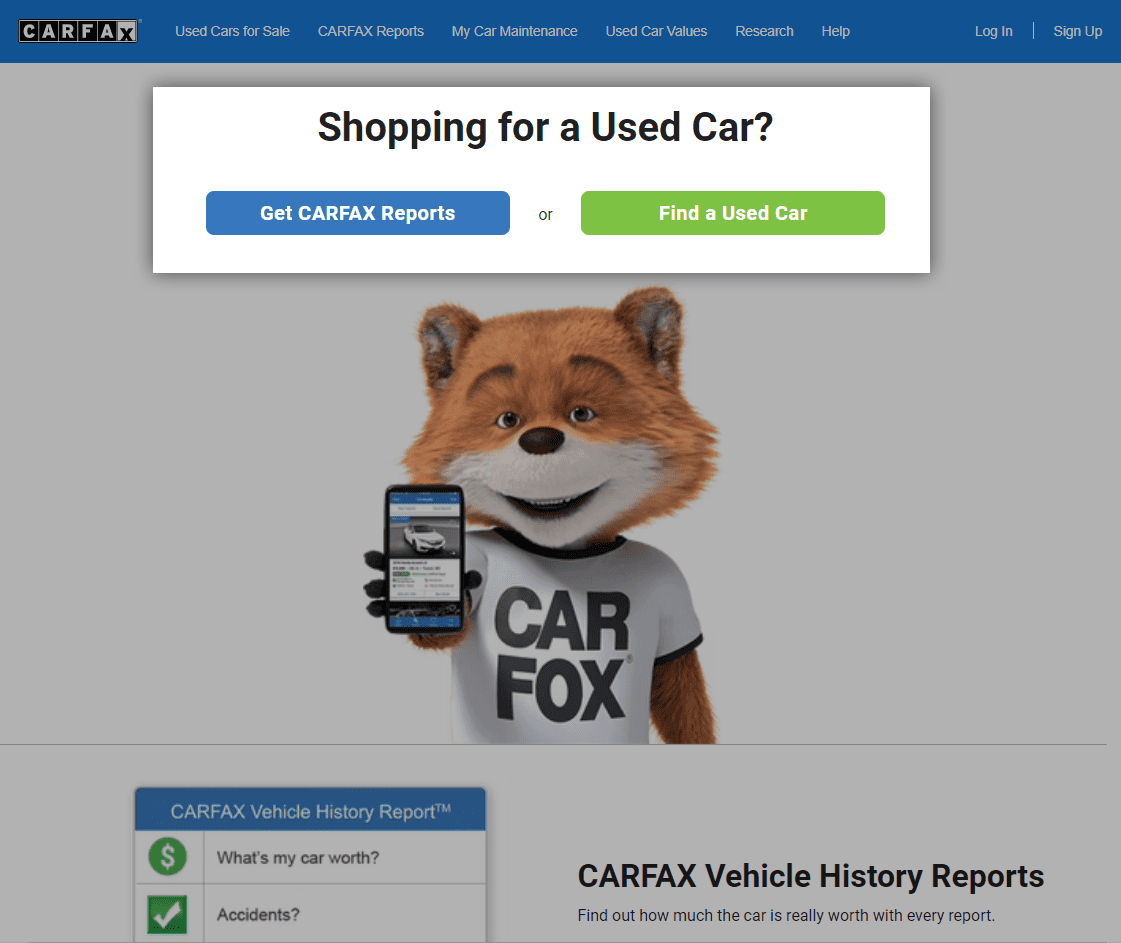
When you participate in auctions and then resell them on marketplaces, you will typically buy higher priced items like:
- Repossessed homes
- Repossessed cars
- Impounded property from police auctions (boats, cars, homes)
You probably won’t get much time to view them, so you need to be prepared. You can get deep discounts by buying property this way. I have seen homes sell for under 50% of market price.
Use CarFax or other VIN checkers if you are buying cars. It’s helpful to have someone working with you that is handy with mechanical work because you might have hidden repair costs that will slow down the selling process.
Buy at stores or online, then sell at auction
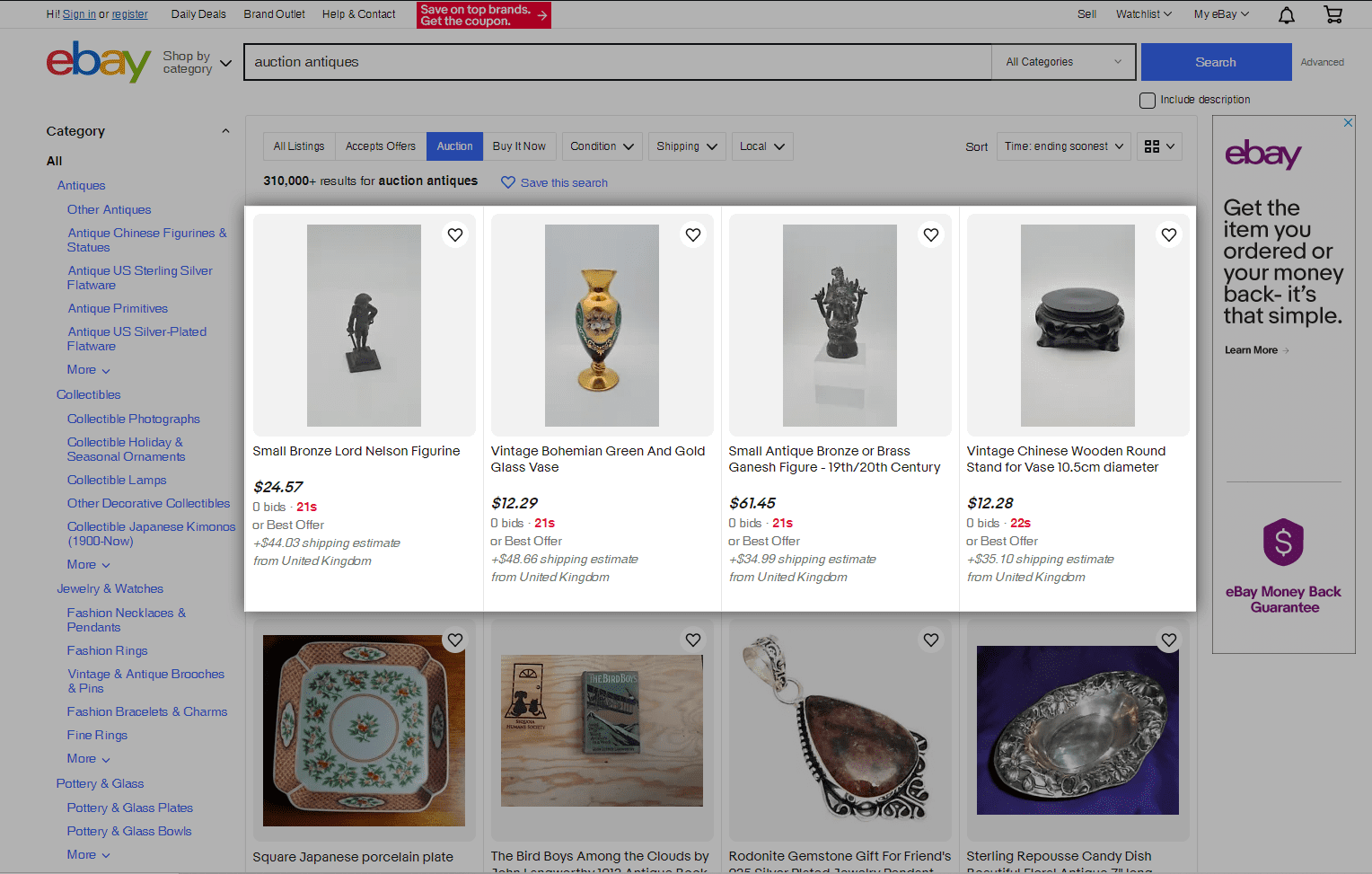
If you find something with a truly high resale value, sometimes the best way to sell it is at an auction. You can sell:
- Antiques
- NFTs
- Rare cars
- Paintings
- Jewelry
- Watches
- Rare musical instruments
- Designer labels
Every auction house takes a commission from the buyer, seller, or both. You can expect that the percentage will be at least 25% of the sales price, but potentially up to 50%. Auctions are best when you have an item you expect will be met with high demand.
Otherwise, every online marketplace charges less of a commission to resell for a profit.
What are the best things to flip on Poshmark?
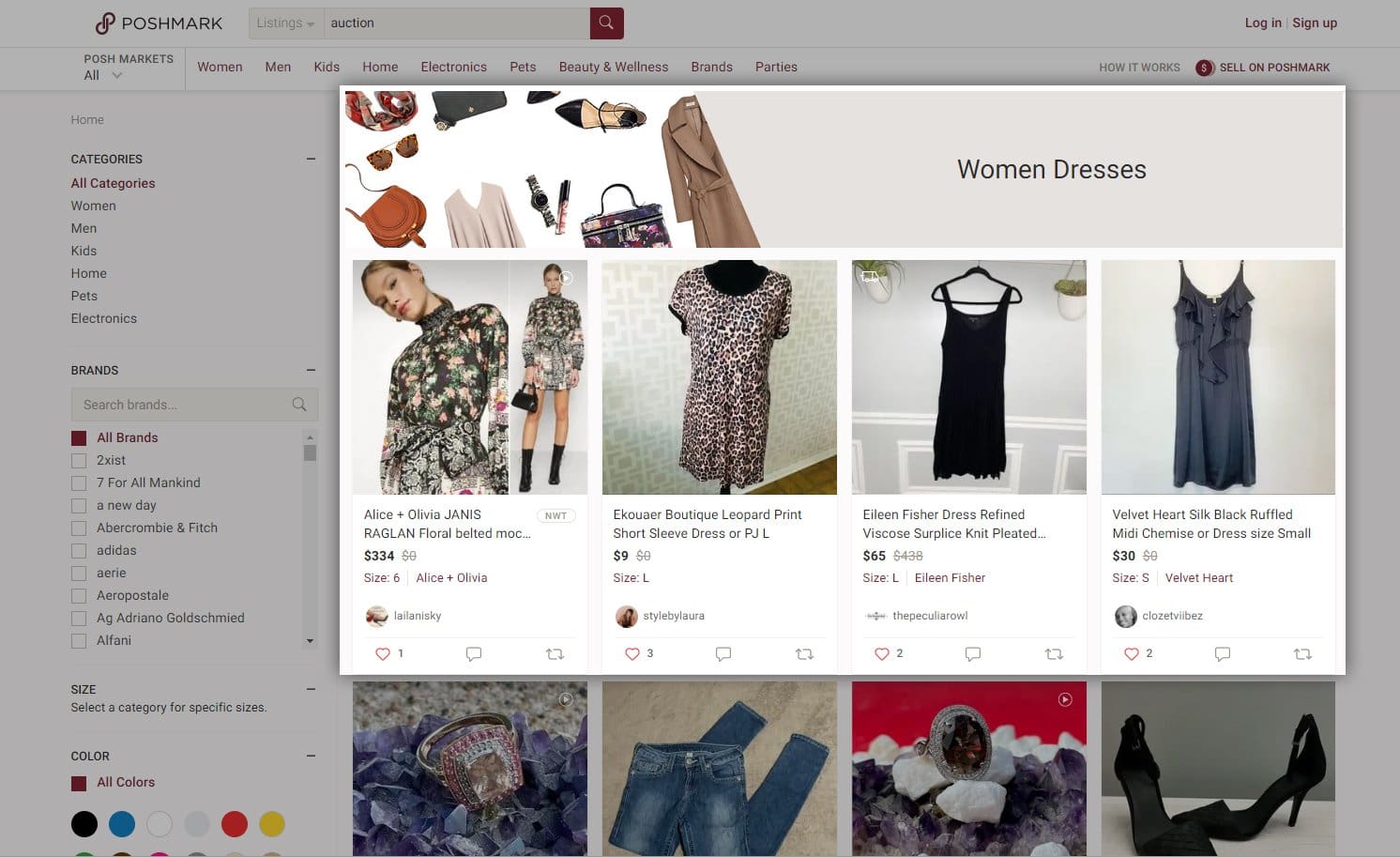
Poshmark is a cross between social media and eCommerce where you can follow people on a secondhand apparel market and buy products from them. It’s better than leaving your stuff collecting dust. Ecommerce sellers and resellers can sell:
- Clothing
- Home products
- Electronics
- Pet products
- Handbags
- Shoes
- Jewelry
- Makeup
- Dresses
Turn your own collection into a full-time income by selling some of their most popular brands including:
- Nike
- Michael Kors
- Louis Vuitton
- Lululemon Athletica
- PINK Victoria’s Secret
- Coach
- Chanel
Check out the Poshmark Guide for a few pointers on starting an online business.
What are the best items to flip on Etsy?
Flipping products on Etsy requires sellers to offer vintage, custom, or digital products. If you are looking to resell on this online platform, consider:
- Vintage hats
- Vintage cabinet knobs
- Vintage rugs
- Digital guides
- Baby gear
- Vintage toys
- Antique furniture
Check out our blog about how to start an Etsy store or watch an interview with Vlad Kuksenko.
Best Places to Find Items to Resell
There are several places where people look for items they can resell. Some of the most common include:
- Wholesalers
- Thrift Stores
- Flea Markets
- Garage Sales
- Estate Sales
- Auction Sites
- Online Marketplaces
- Going-Out-of-Business Sales
- Retailer Clearance Items
Let’s look at how each works.
Wholesalers
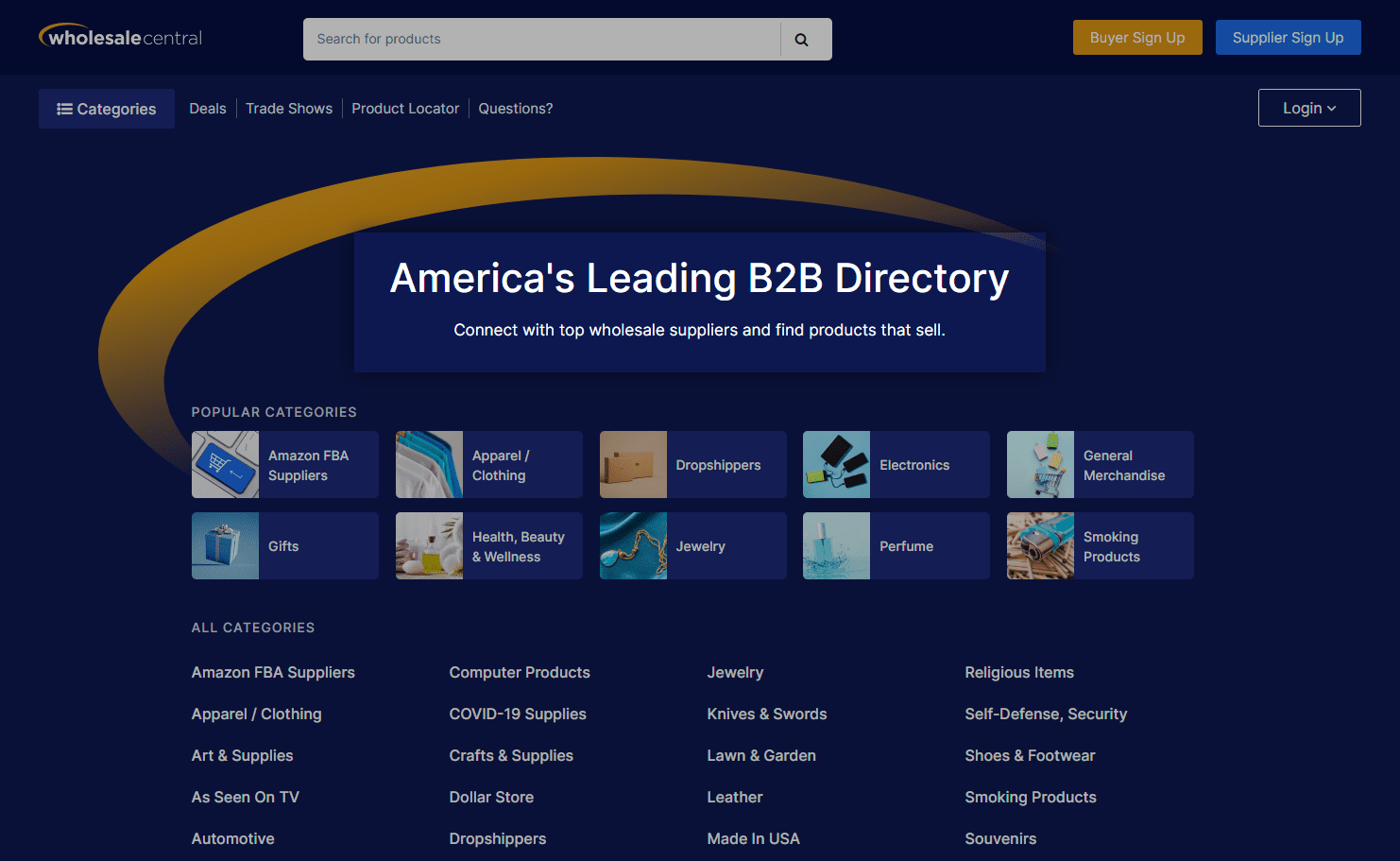
When you purchase items from a wholesaler, you buy in bulk for a discount. Then, you’ll sell each item individually. Your profit margin is based on the difference between the retail price and the per unit cost of your bulk order.
You can find a list of suppliers on Wholesale Central. You can also consider:
Thrift Stores
Many small business owners go to their local thrift store looking for items that they can sell for a higher price. When I worked at Goodwill in Austin, Texas, one of the regular customers found an item for $3 that he sold online for nearly $2,000.
Flea Markets
Another place people like to go to find great deals are flea markets or swap meets. Sometimes seen as open-air events or large barn-style venues, these are places where lots of vendors go to buy, sell, and trade new and used items.
Garage Sales

Yard sales and garage sales can be good ways to find items to resell. You’ll be able to find them on sites like:
- Craigslist
- GSalr
- Facebook Marketplace and Groups
- Yard Sale Search
Estate Sales
These are similar to a garage sale but occur when entire properties need to be sold or managed efficiently. Sometimes families need or want to handle things as quickly as possible. Estate sales often help liquidate all belongings to pay for funeral costs or debts.
Mike told us:
Auction Sites
You can find amazing deals at auctions. I bought two art deco nightstands used in a 5-star hotel for $10 one time. Check out Local Public Auctions for a list of auctioneers near you. If you find a real steal you can take them to one of the bigger auction sites like:
Mike warned that Storage Wars makes people think it’s easy but storage is a lot harder than it looks:
Online Market Places

Online marketplaces are great places for good deals. Parents will often give away kids’ clothes, plus people sell furniture, power tools, and consumer electronics when they are trying to clear space in their homes.
Mike suggested checking out:
You might also try OfferUp, which bought letgo.com to offer both sites the same functionality.
Going Out of Business Sales
If you are looking for commercial equipment, good deals on large amounts of products, and furniture for a restaurant or store, look for going out of business sales.
Retail Clearance Racks
Sometimes companies will sell products for way less than normal, so they can clear space for new items. You can make serious money if you have a place to store them. For instance, after any major holiday, the pricing of seasonal items is discounted by up to 90%.
Online Arbitrage Software
There are a ton of software programs that can help you find the best items to resell. Here’s a list of some of them and how they help you:
CNET Shopping
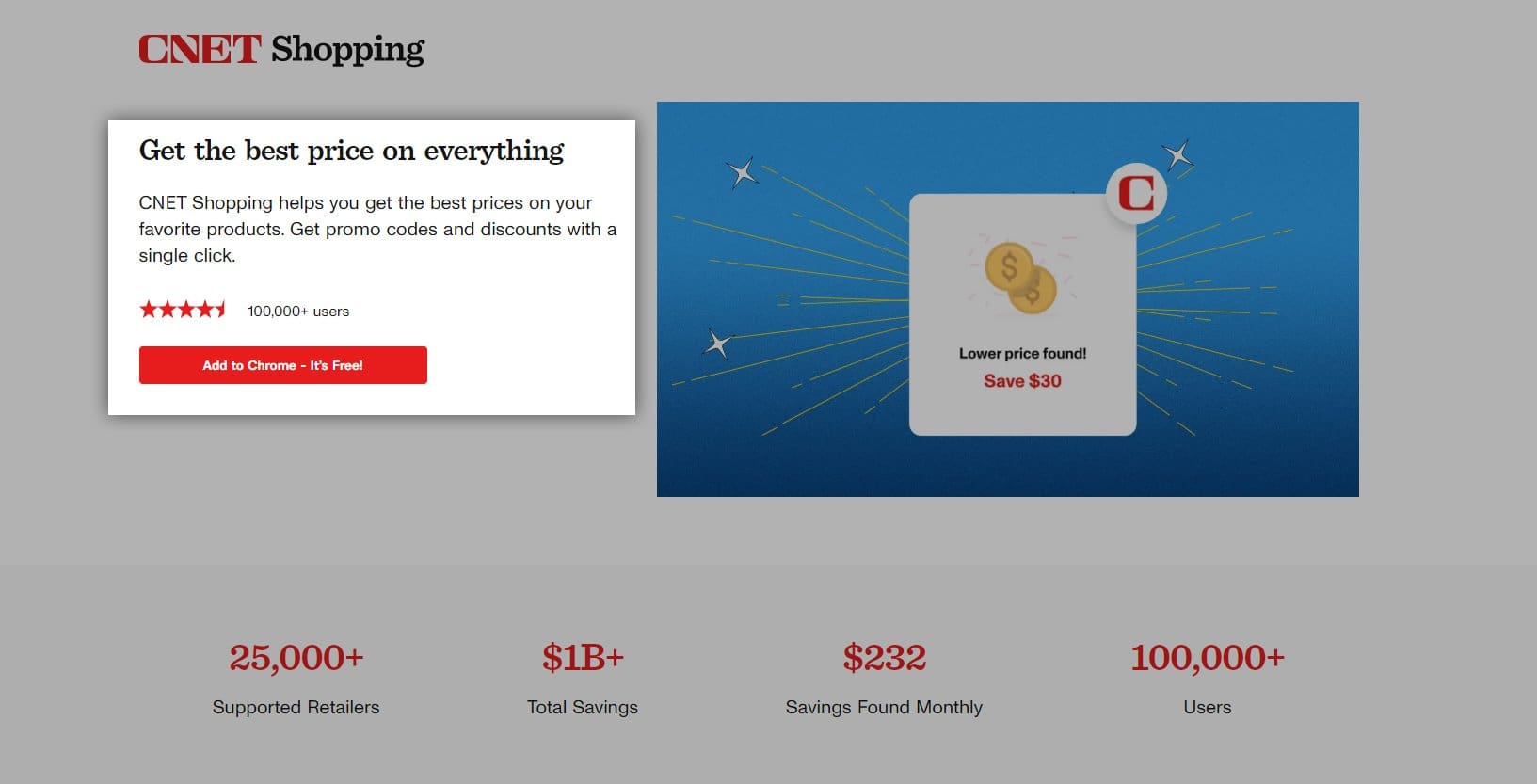
Formerly Invisible Hand, the CNET Shopping Chrome Extension will show you the lowest price to buy any product. It’s free, too. I found a couple of electronics with pricing of $100–$400 less than other sites.
Tactical Arbitrage
Use Tactical Arbitrage to find products to buy on Amazon and flip on other sites. Look for wholesale products that will generate specific returns, or use reverse lookups to find the cheapest place to buy a product and resell it. You can combine all the features or get just the ones you need.
RevSeller
Get a RevSeller estimate of the profit you’ll make for selling products using Fulfillment by Amazon. It’s an extension that runs about $100, but it has a 30-day free trial.
SourceMogul
Find profitable deals, buy them with SourceMogul, and have them sent directly to Amazon to sell.
Jungle Scout
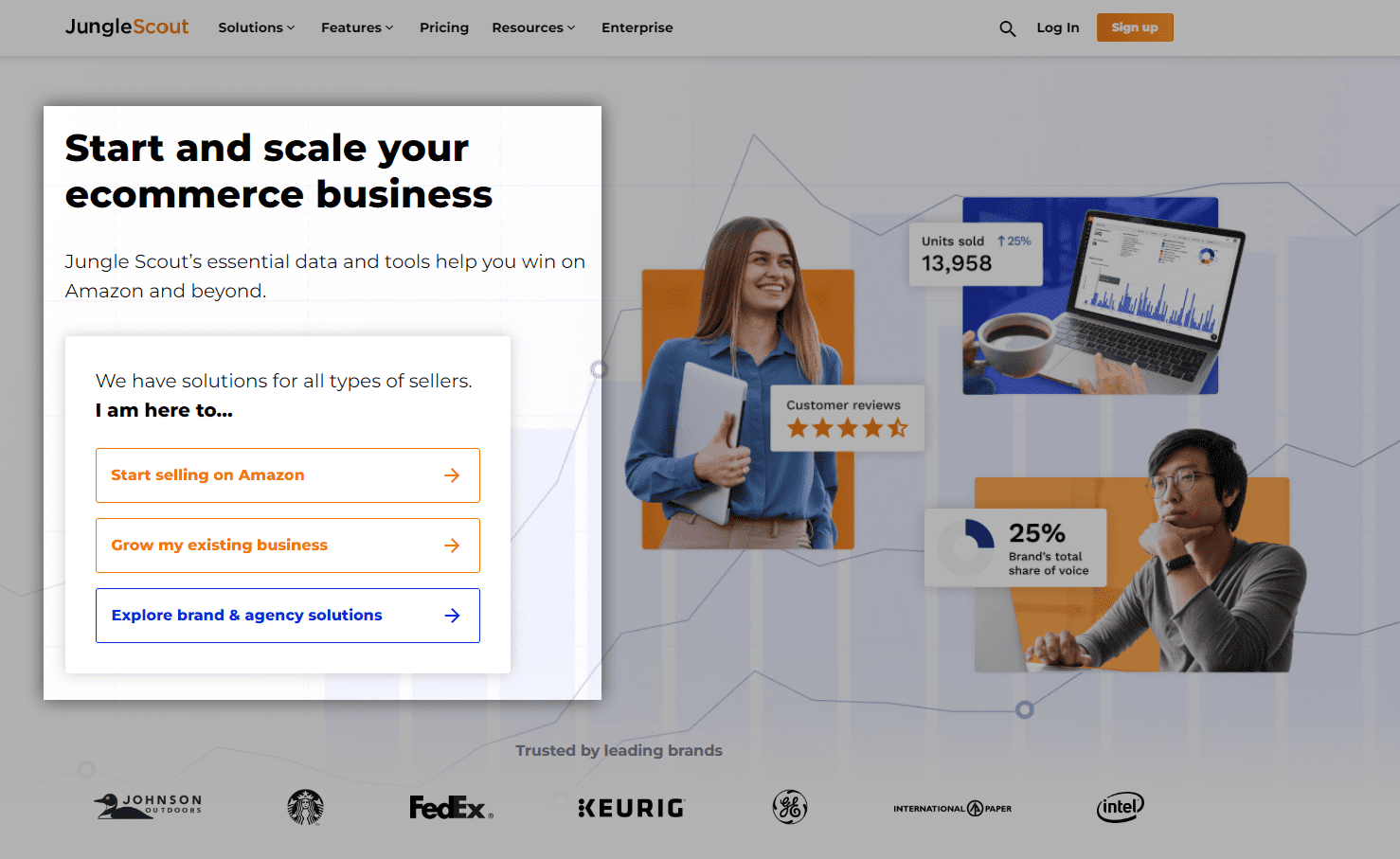
Find the best resale items with Jungle Scout. They rank items based on competition and where to purchase them. It even helps you track your Amazon seller ranking and find optimal keywords. They have a 7-day money-back guarantee, and packages start at about $30 per month.
BrickSeek
Find sales in retail stores near you with BrickSeek. Just set custom notifications to find sales on products you can buy cheap and sell high.
ProFlipperz App
Use your android phone to scan a barcode, check to see if it’s a good value, buy it, then list it on all of your platforms. It is also available for iOS. It seems to be a fairly new entrant that mostly operates using affiliate marketers, but the process seems to work.
WorthPoint
Mike told us:
Nextdoor Free Finds
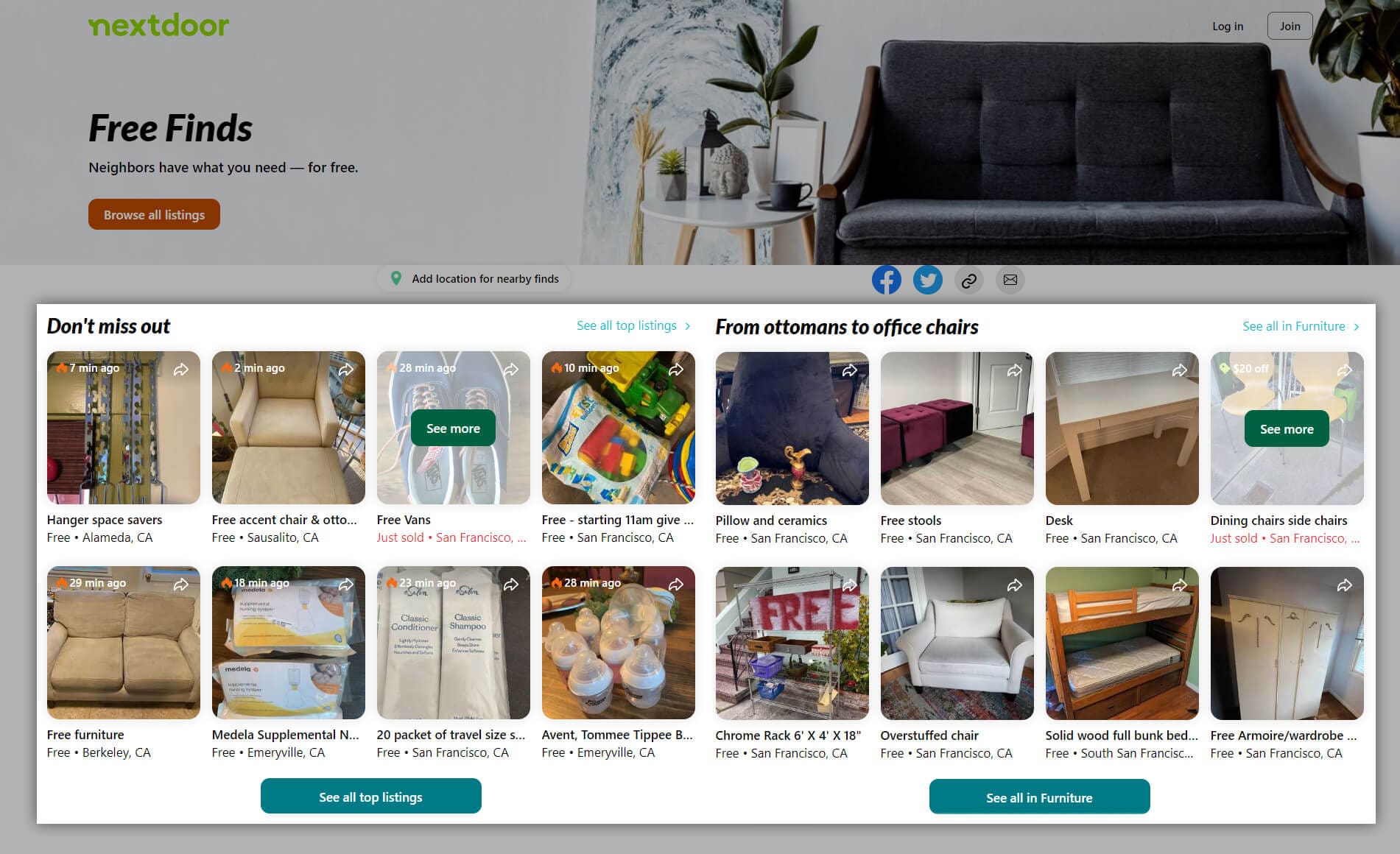
You’ll be surprised what you can find for free on Nextdoor Free Finds. Check out their listings of free items in your area.
What Are the Best Things to Resell?
There are a lot of opinions about what the best things to resell are, but from what I have seen, the following products tend to resell for far more than their normal purchase price:
Starbucks limited-time cups: The cups from Starbucks are hot sellers. They often go for three to five times the price Starbucks sells them.
Trending kids’ toys: Every year, you see people buy the hottest toys and mark them up to ridiculous values. This used to be just during the holidays, but TikTok has made it where people succeed in doing it year-round.
Vintage and Designer Clothing: Many donation stores misprice clothing because they don’t have the workforce to accurately price each piece of clothing. Sometimes you can find clothing and other products at ridiculous discounts and sell them online.
Designer Sneakers: Limited print shoes tend to be a profitable business. If you look at Jordan’s, they tend to sell on Amazon for up to $300 more than they cost when you could buy them in stores.learn how to become a shoe reseller.
What Is the Easiest to Resell?

People are always looking for good deals on items like:
- Bicycles
- Books
- Clothing from your own closet
- Exercise equipment
- Furniture
- Power tools
- Services
- Sports equipment
- Video games and consoles
- Vintage electronics
- Watches
- Websites
- Yard equipment
What Items Have the Highest Resell Value?
If you’re looking for low volume and high profits, you’ll want to consider some of these items.
ASIC Miners: This is computer equipment used for mining cryptocurrencies like Bitcoin, Ethereum (soon to move away from mining), and Kadena. The pricing can fluctuate dramatically as shown in the chart below:
Cell Phones: When you upgrade a cell phone, the old one will often have a decent resale value if you don’t trade it in. This is especially true of the higher storage models, which are harder to find used.
Graphical Processor Units (GPUs): Crypto has dramatically impacted the value of GPUs. If you find computers with functional Nvidia GPUs in them, you may be able to sell them for a profit online. If you buy them now and hold them until the next bitcoin halving in 2024, you will likely see a lot of profit by flipping items.

Antiques: Many sellers hold garage sales and estate sales where you can find good quality wood furniture, antique toys, old books, and other products that may be worth serious cash. You have to know how to value them, but the profit potential is huge!
Vintage Cars: The 1968 Shelby GT had an original list price of $4,000-$5,000. Today people are selling restored vehicles for $150K+, nearly five to seven times what they would be worth when calculating for inflation.
What Is the Best to Resell Due to Demand?

Some items have really high demand like:
- Phone chargers
- Phone cases
- Video games
- Gaming systems
- Vintage clothing
- Vintage items like board games
If you buy these in bulk and sell them individually, you can make a lot of money on the markup.
Fest Items to Flip
I’m not sure whether the above is saying is because people mispell “best” or because 32 million people love going to music festivals and some of us want to spend our whole lives at them (I’m in this category). I’m going to assume flipping items at music festivals is the intent.
If you’re looking for a great way to combine a love for tunes and making money, consider these fun items to sell:
- Art
- Bug repellant
- Clothing
- Face painting
- Food and drinks
- Home decor
- Jewelry
- Umbrellas
- Phone charging station
- Sunscreen
- Toys, especially glow toys
- Umbrellas
Flipping Electronics
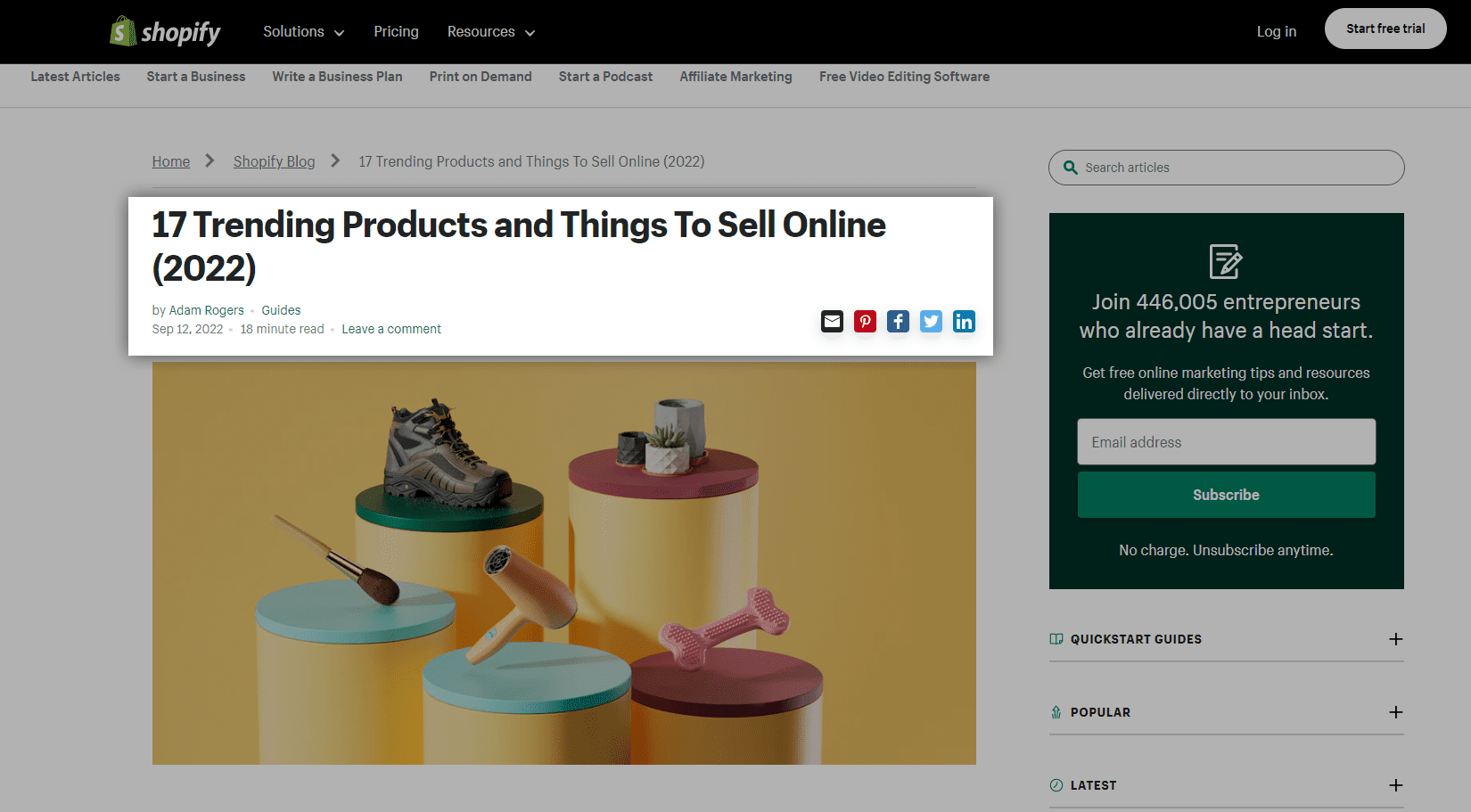
If you’re looking to flip electronics, you’ll want to know used and new market rates for each product. You’ll then want to find ways to buy the products where you can make a 33% gross profit margin.
If you’re trying to keep up with new electronic trends, use sites like:
- Amazon Best Sellers List
- Google Trends (search term: electronics)
- Exploding Topics (sorted for products and one month)
- Shopify Trending List (blog)
- YouTube Unboxing Videos (sorted by last month and most views)
Don’t forget to subtract your time, selling fees, and shipping costs from the price you want to sell the products. Otherwise you might pay too much.
Best Things to Buy and Resell
There are a ton of things you can buy and resell for a profit. Some of the most profitable are:
- Limited edition drinks and food (Make sure to check expiration dates.)
- Winter jackets
- Kid gear
- Collectible toys
- Sleep Number Mattress controls and other remote controls (Sometimes people lose controls or buy a used product and have to buy a remote.)
- Textbooks
- Ink and toner cartridges for printers
Best F2P Items to Flip

This section is focused on video game items that you can earn and sell for a profit online. F2P stands for free to play. Many games allow you to create your own items and sell them in-game.
Other people build an account and sell it once they’re done with the game to recoup some of their costs. Be sure to read the terms of the game to make sure you aren’t violating their rules.
Some of the games that you can sell on are:
OldSchool RuneScape (OSRS): Original Runescape. The value of the items will be based on the rarity in the game, but the top ranked seller on PlayerAuctions has made over $15,000 selling over 100 items. A 3rd Age Pickaxe is listed for between $1,400 and $2,000. Not too bad for playing video games.
RuneScape: This is an updated version of OSRS. The resell values are lower.
Most Blockchain Based Games: Many of these will require an NFT, a metamask wallet, and a crypto debit card but you will be able to earn rewards that can be traded on the open market for cash. You can also sell your NFT if it appreciates in value.
Metaverse Worlds: Many metaverse companies allow selling online through their metaverse. Interact with people in VR and sell your real world items. Just don’t get stuck in the Matrix. You can also charge for access to your world and resell the NFT if you wish. Find the 10 best worlds to check out.
Bazaar Items: It appears this is referring to an online card game that is currently in beta testing. You can check out their website at Play Bazaar. It is a game created by the owner of the professional gaming team Tempo Storm. I’ll add the best items to Bazaar flip when the game releases to the public.
What are the best items to flip OSRS?
The higher price items that people flip on OSRS include:
- Power Leveled Accounts: Up to $1,000, but most are custom quotes
- 3rd Age Pickaxe: $1,150 – $2,000
- Twisted Bow: $500 – $521
- 3rd Age Bow: $420
- 3rd Age Druidic Cloak: $328 – $400
- Elysian Spirit Shield: $383
- Gold: $.398 – $1.01 per million gold in batches of 10 million
PlayerAuctions has 200 other games you can sell items for including Roblox, World of Warcraft, Fortnite, and more.
What are the best items to flip RS?

For non-gamers RS is short for Runescape, which is another game with high demand items that people buy with real money using online sites. The rs best items to flip are:
- Gold: $.044 – $.10 per million gold in batches of 100 million
- Blue Party Hat: $7,900 – $10,000
- Red Party Hat: $2,600 – $4,000
- Gold Party Hat: $1,500 – $2,500
- Black Santa Hat: $1,433
- Red Santa Hat: $178 – $182
- Accounts: $18 – $4,750
Gold under $100 seems to be the best selling item, though. Prices are averaged from PlayerAuctions.
Best Things to Buy and Resell for Profit
By far the best thing to resell for profit are homes and other real estate. For every $100,000 you spent on a home in 2012, you might have $132, 813 today. Plus, you can rent them out to cover the costs.
There’s a reason that the median household assets are dominated by their primary residence and rental properties. It’s because they have beaten inflation for the majority of the last century.
Check out our Podcast about how to invest in real estate.
Other assets that often increase in value include stocks and bonds.
For other items, you should probably consider using a formula similar to pawn shops. They assume they can sell it for the lowest price online or half the retail price, whichever is lower. Then they’ll offer you half of that.
So effectively use this process to find the price you are willing to pay:
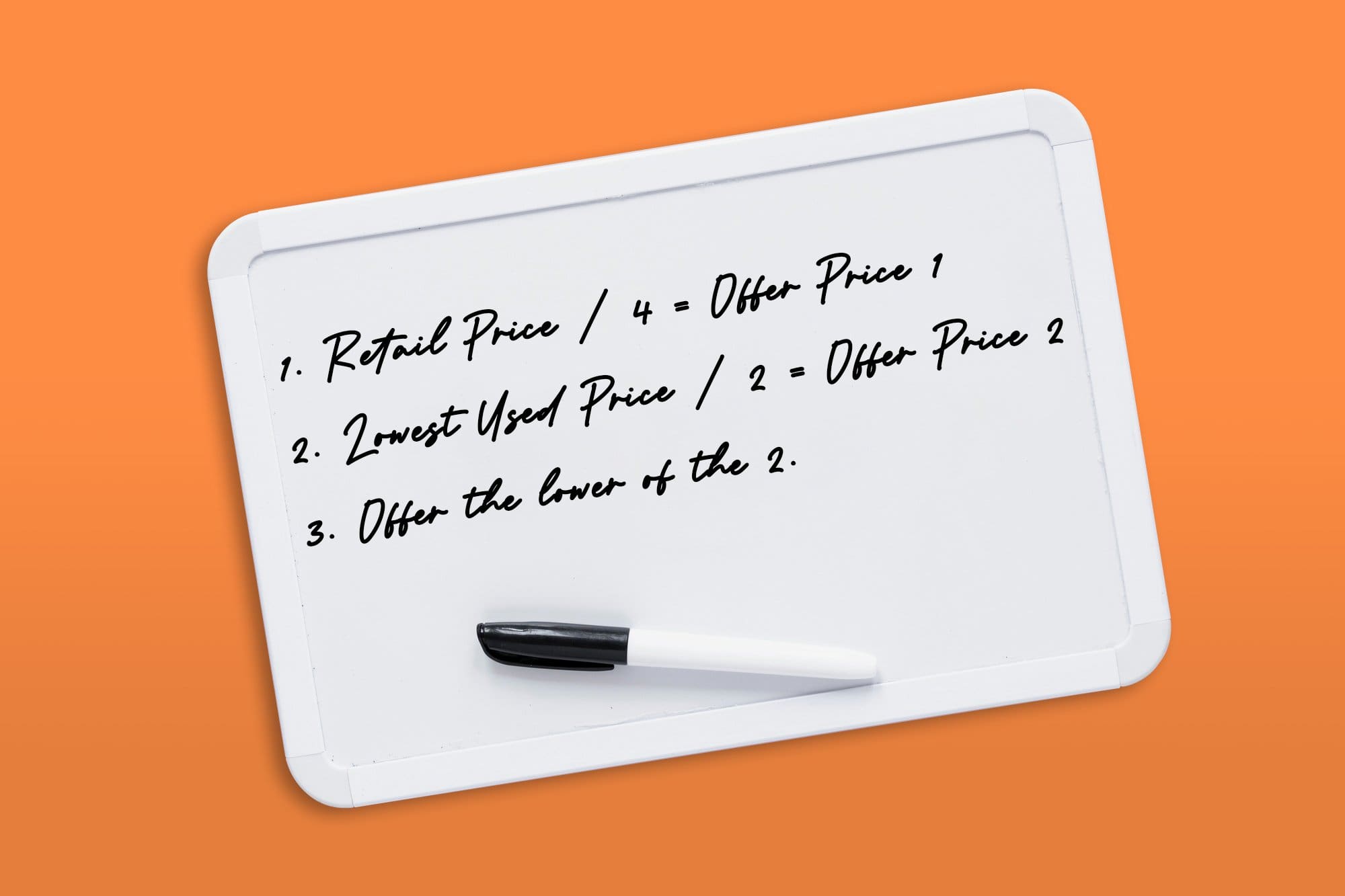
Best Things to Shoplift and Resell
When researching the keywords for best things to buy and resell, this was surprisingly one of them. Sure you’ll save money by shoplifting, but money doesn’t do you much good if you end up in jail. Also, stealing causes inflation, which cause other problems.
But seriously, don’t commit crimes. It’s a horrible idea for advancing a business career.
What Are the Best Things to Buy at Goodwill to Resell?
Goodwill and other thrift shops are a great place to find items to sell. You will commonly be able to find the following items that are easy to sell:
- Vinyl Records: Here’s a list of the most commonly requested records.
- Sports and exercise equipment: Thrift stores tend to price items that take up lots of space at ridiculously low rates to get them out of the store quickly.
- Books: Check out the Guardian’s list of best selling books
- Clothes: Sometimes, the thrift store employees who sort clothes don’t recognize designer brands. If you get lucky, you can buy a $100+ product for $5.
- Obscure Art: A lot of art comes into a thrift store that people don’t know is valuable. You can find some incredible deals with just a bit of art knowledge.
- Jewelry: Thrift stores will often sell jewelry below the price of the raw materials. When that occurs, you can make a fair profit buying from Goodwill and other thrift stores.
What Items Have You Resold?
You’ll need to enjoy what you are doing because you’ll spend a lot of time shopping for a deal you can sell for a higher price. If you love checking out thrift stores and yard sales, or doing online arbitrage, you might enjoy being a reseller. Learn how to resell.
What are your favorite items to resell?

